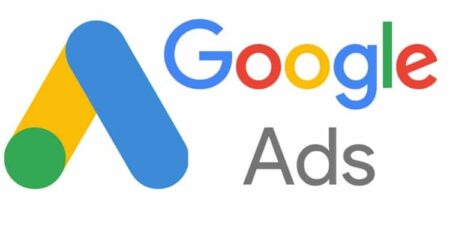A Deep Dive into Google Ads: Advanced Tactics for Success
Mastering the Art of Google Ads for Unparalleled Growth
Google Ads is an essential tool for businesses that want to increase visibility and drive conversions. While the basics like keyword selection and writing good ad copy can get you started, there is much more to achieving lasting success with Google Ads. In today’s competitive market, mastering advanced tactics is crucial to gaining an edge and maximizing returns.
This guide will dive deep into advanced Google Ads strategies that go beyond surface-level techniques. We’ll explore a variety of expert methods to ensure your campaigns are optimized and positioned for success. These techniques will help you maximize conversions, reduce costs, and increase the overall effectiveness of your ads.
Smart Bidding Strategies to Maximize Returns
One of the most powerful tools Google Ads offers is its smart bidding functionality. Unlike traditional manual bidding, smart bidding uses machine learning to optimize your bids in real time. This system adjusts bids based on a variety of factors, such as user location, time of day, device, and previous browsing behavior. As a result, smart bidding helps you spend your budget more effectively, ensuring that your ads are served when they’re most likely to convert.
Within smart bidding, options like Target CPA (cost per acquisition) and Target ROAS (return on ad spend) can help you focus on specific goals. Target CPA, for instance, is great if you want to maximize conversions while keeping costs predictable. Target ROAS, on the other hand, allows you to prioritize profitability, ensuring that every dollar you spend generates a solid return.
Tip: Combine smart bidding with data from Google Analytics for more precise results. This allows you to use historical data, such as conversion rates, to further optimize your bidding strategy. The result is a data-driven approach to spending that continually refines itself over time.
Leveraging Audience Segmentation for Targeted Ads
Keyword selection is fundamental to any Google Ads campaign, but layering audience segmentation on top of that can lead to even greater success. With audience segmentation, you can target ads more precisely by focusing on specific groups of people who are more likely to convert. This goes beyond simply relying on the keywords they type into the search bar.
Google Ads provides multiple options for audience segmentation, including remarketing lists, affinity audiences, and in-market audiences. Remarketing lists allow you to target users who have already visited your site or interacted with your brand in some way. This makes it easier to re-engage with potential customers who may be close to making a purchase. In-market audiences, meanwhile, focus on users actively researching or considering purchasing specific products or services. Affinity audiences are useful for reaching people based on their long-term interests and lifestyle preferences.
Tip: For even more targeted ads, use Customer Match to upload a list of customer emails. This feature helps you deliver ads to your most valuable customers and build lookalike audiences to expand your reach.
Using Ad Extensions to Boost Engagement and Visibility
One of the most underutilized features in Google Ads is the variety of ad extensions available. Ad extensions allow you to include additional information in your ad, making it more engaging and improving your overall click-through rate (CTR). These extensions enhance your ad by giving users more reasons to click, without costing you extra for the additional visibility they provide.
There are several types of ad extensions you should consider using. Sitelink extensions allow you to include links to specific pages on your website, offering more options for potential customers. Callout extensions let you highlight important promotions or selling points, while location extensions make it easier for nearby users to find your business. You can also add call extensions, which display a phone number and make it simple for mobile users to call directly from the ad.
Tip: Using a combination of ad extensions can significantly improve your ad’s performance. For example, combine callout extensions with sitelink extensions to give users both promotional information and more landing page options. This multi-faceted approach keeps the ad relevant and increases the chances of conversion.
Optimizing Landing Pages for Better Ad Performance
Your ad may successfully generate clicks, but if the user experience on your landing page falls short, conversions will suffer. Google uses a metric called Quality Score to determine how relevant your landing page is to the ad that brought users there. Optimizing your landing pages can improve your Quality Score, which in turn can lower your cost per click (CPC) and improve ad placement.
To optimize your landing page, focus on aligning the content with the intent behind the keyword. If your ad promises a discount, make sure the landing page prominently displays that offer. Your call-to-action (CTA) should be clear and easy to find, and the page should be mobile-friendly to accommodate users on smartphones and tablets.
Speed is also essential. If your landing page takes too long to load, users are likely to abandon it before it even fully loads. Use tools like Google’s PageSpeed Insights to evaluate and improve your page load times.
Tip: Continuously run A/B tests on your landing pages to determine what layout and content lead to the highest conversions. You might be surprised by how even small tweaks, like changing the color of a CTA button or adjusting the headline, can lead to big improvements in performance.
Advanced Keyword Strategies for Maximum Impact
While most advertisers understand the importance of choosing the right keywords, many overlook the potential of advanced keyword strategies. One of the most effective advanced tactics is using negative keywords. These are terms you don’t want your ads to appear for, and they can help you avoid wasting money on irrelevant clicks.
Another advanced strategy is to focus on long-tail keywords. These are more specific and often less competitive than short, generic keywords. Although long-tail keywords may have lower search volumes, they usually attract more qualified traffic, meaning users are more likely to convert.
Broad match modifiers are another useful tool. These allow your ad to appear for a variety of related searches, not just the exact keyword you’ve targeted. This can help you capture traffic you might otherwise miss, but it’s essential to monitor your performance and adjust your keyword list based on actual search terms users are typing.
Tip: Regularly review your search term reports to refine your keyword strategy. These reports show you what users searched for before clicking on your ad, helping you identify new opportunities and add negative keywords to exclude irrelevant traffic.
Crafting a Path to Continued Success
Achieving lasting success with Google Ads requires more than just setting up a campaign and letting it run. It demands constant monitoring, testing, and optimizing. The advanced tactics outlined in this guide—smart bidding, audience segmentation, ad extensions, optimized landing pages, and refined keyword strategies—are essential tools for any advertiser serious about maximizing the potential of their Google Ads campaigns.
As you implement these strategies, remember that digital marketing is a dynamic field. What works today may not work tomorrow, so it’s crucial to stay informed about the latest developments and continually refine your approach. By focusing on the right metrics, using data to drive decisions, and staying adaptable, you’ll be well on your way to mastering Google Ads and achieving the growth your business deserves.










